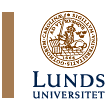

|
Panel No. 23Panel Title: History of the Indian Princely StatesConvenor: Dick Kooiman, Dept of Anthropology (Asian History), Amsterdam Free University, the Netherlands Friday 9 July, 8–12 & 13–18 Panel Abstract: The panel will bring together researchers working on the history of the Indian princely states. The papers to be discussed - work-in-progress, fresh material or finished products - should contribute to one of the following themes:
Papers accepted for presentation in the panel:Paper Giver 1: Georg Berkemer & Margret Frenz Paper 1 Title: Little Kingdoms or Princely States? Trajectories Towards a (Theoretical) Conception Paper Abstract: As an outcome of the panel no. 45 on the little kingdom in Heidelberg in 2002 it has been suggested to further explore the intersection of the concept of little kingdom and studies on princely states. This paper attempts to show that these two concepts represent ideas as well as notions on different levels of abstraction. The category of the little kingdom, on the one hand, has been used by various scholars as a historical model, and therefore as an analytical tool. Princely states, on the other hand, are existing historical entities. This places them into the category of historical phenomena to be studied rather than tools to facilitate such a study. The paper intends to shed light onto several historical cases from which differences between traditional kingdoms and princely states can be illustrated and used as examples to outline the distinction of these two categories. Paper Giver 2: Michael H. Fisher, Oberlin College, USA Paper 2 Title: Conflicts over Political Representation and Information Control by Indian Princes, 1757-1857 Paper Abstract: Over the century following 1757, power haltingly
shifted from India's regional rulers to the East India Company.
Political representation and information control remained a central
and conflicted issue of this transition, reflecting and enhancing
the imbalance between princely states and the British. The earlier
network of Indian wakils, who represented regional rulers at each
other's courts, unevenly and grudgingly gave way before a system
of East India Company Residents. Yet, throughout this period, Indian
princes resisted this British effort at monopolization of political
information and representation by deploying their own wakils both
in the Presidency capitals and also in London. These wakils claimed
diplomatic status in an effort to represent their putatively sovereign
prince, gathered information to bypass and undercut the Resident
at their court, Paper Giver 3: Chitralekha Zutshi, College of William and Mary, Williamsburg, USA Paper 3 Title: British Intervention in a Princely State: The Case of Jammu and Kashmir in the Late-Nineteenth and Early-Twentieth Centuries Paper Abstract: This paper attempts to draw out the intricacies of the relationship between the British Residency and the ruling house of the Dogras in the princely state of Jammu and Kashmir. It highlights the impact of the British intervention in Kashmir from the perspective of its political effect on the ruling house as well as its more general impact on the political economy of the Kashmir Valley, which in turn created the context in which Kashmiri Muslims launched educational and other political reform movements. It argues that British mediation in the processes of state-led land and educational reform brought the princely state and Kashmiris into closer contact with the ideologies and movements prevalent in British India at the turn of the twentieth century. Full paper to be downloaded (as a pdf-file) Paper Giver 4: Fatima Imam, Dept of History, University of Toronto, Canada Paper 4 Title: The State Formation in Eighteenth Century Jaipur Paper Abstract: This paper gives a general background for
the rise of the state of Amber from the beginning of the 18th century.
The career of Sawai Jai Singh is the focus of discussion, which
aims to discover how he and his successors created a new state out
of the small principality. Jai Singh first enlarged the boundaries
of his hereditary homeland through jagir assignments while he was
serving the Mughal emperors. Then he started acquiring lands contiguous
to his own watan jagirs through land transfers, contract farming
and exchange of jagirs from other Mughal mansabdars. After establishing
full control over Paper Giver 5: John McLeod, University of Louisville, USA Paper 5 Title: The Rise and Fall of the Kutch Bhayat Paper Abstract: Kutch was a Rajput State in north-western
Gujarat. In 1819, following a short war, a treaty was signed between
Kutch and its new overlord, the British Government of Bombay. The
treaty included a provision that the British would guarantee the
nobles of Kutch, the Bhayat, Ain full enjoyment of their possessions.
The meaning of possessions was left vague, but it was interpreted
as including executive, judicial and fiscal powers over the lands
of the Bhayat. As a result of this, about half the area of Kutch
was effectively exempted from the control of the State's king, or
Maharao, being governed by the guaranteed members of the Bhayat. Full paper to be downloaded (as a pdf-file) Paper Giver 6: Ian Copland, Monash University, Australia Paper 6 Title: What to do about cows? Princely versus British approaches to a South Asian dilemma Paper Abstract: For more than a millennium, the cow has
been a source of contention in South Asia. On the one hand, most
Hindus, Sikhs and Jains hold the animal to be sacred and inviolable.
On the other hand, beef has always constituted a major part of the
regional Muslim diet. Moreover, until recently it was the habit
of Indian Muslims to sacrifice cows at the annual festival of ‘Id-ul-Adha,
because tradition held that large animals could be shared amongst
seven sacrificers (which made cows a cheaper option for poorer families
than sheep or goats). By the Mughal period, the issue had become
so divisive and potentially disruptive of public order that several
of the emperors were driven from time to time to issue edicts banning
or greatly restricting cow-slaughter in their dominions. The Marathas
and the Sikh Kingdom of Lahore took this a stage further, both prescribing
blanket bans. Paper Giver 7: Margret Frenz and Georg Berkemer Paper 7 Title: Colleges and Kings: Strategies and Aspirations in Higher Education under Direct and Indirect Rule Paper Abstract: In any society, education has been and still
is a contested field. The paper links the question of agency in
this field with colonial categories of direct and indirect rule,
slots into which historical rajas have been put according to historical
coincidence rather than by design. Those under British direct rule
usually became known as zamindars, whereas those under indirect
rule were categorised as ruling princes. Their internal sovereignty
implied the rajas’ responsibility in education policy. Zamindars
had no such rights and could, if at all, only interfere episodically.
Any effort from their side we may consider as private. However,
zamindars also felt the need to found and support institutions of
higher education in their area of influence since the rajas’
and the zamindars’ esteem was derived from the same source
of dharmic rulership. Paper Giver 8: Vasant Kumar Bawa, Hyderabad, India Paper 8 Title: The Seventh Nizam: the Claim for Independence and the Khilafat Question Paper Abstract: The paper seeks to examine the following
aspects of the last Nizam’s controversial career as the ruler
of Hyderabad from 1911 to 1948 : Full paper to be downloaded (as a pdf-file) Paper Giver 9: Dick Kooiman, Vrije Universiteit Amsterdam, Netherlands Paper 9 Title: Travancore State and the Invention of Local Tradition Paper Abstract: The hundreds of Indian princes came to be
seen as feudal subsidiaries to the British Crown, especially so
after Queen Victoria had adopted the title of Indian Empress (1877).
The adoption of this title was announced at an Imperial Assemblage
in Delhi, hosted by Viceroy Lord Lytton, where the more prominent
Indian princes received banners, gun salutes and other marks of
distinction, conceptions entirely based on feudal theories. Full paper to be downloaded (as a pdf-file) Paper Giver 10: Uwe Skoda, Free University, Berlin, Germany Paper 10 Title: Visualizing Dossehra: the Display of Royalty and the Performance of Power in the princely state of Bonai in the late 1930s Paper Abstract: During research on the princely state of Bonai I discovered a unique album of photographs taken in the late 1930s which shows the rituals and festivities around Dossehra and immediately following (until the time of the full moon), when the tutelary deity of the Raja is worshipped. While old family photographs and wedding albums can frequently be found with the royal families of Orissa and elsewhere, pictures of rituals, of the performance and display of power as well as of the local society in a small kingdom are rather rare. Beginning with these photographs, I will try to analyse the political relationships within the state of Bonai and the significance of the Raja at the centre. Beyond the visual evidence, I will explore what has been – probably very consciously – left out of the photo album. Paper Giver 11: M.S. Anitha, Maharani's Arts College for Women and University of Mysore, India Paper 11 Title: Moulding the mind of a Native ruler during the Colonial period in India - A case study of Krishnaraja Wodeyar IV of Mysore (1902-40) Paper Abstract: The mind of a monarch was closely related
to the process change in his state. In this context it may be pointed
out that since ancient period in India there was a saying about
a ruler in general namely; Yatharaja, Tathapraja. Arnold Toynbee
in his Study of History, points out that for the continuous survival
of society or a culture or a civilisation, its creative minority
has to successfully respond to the challenges from within and without.
In a monarchical system of polity, a ruler becomes head of the creative
minority along with bureaucracy, courtiers, scholars and other prominent
elements. Generally common people followed the ruler or ruling elite.
Hence the level of enlightenment of a monarch determines the level
of progress. On the basis of this hypothesis the present paper will
be prepared, where the emphasis will be laid on moulding the mind
of Krishnaraja Wodeyar the IV who was the ruler of the Princely
State of Mysore during colonial period (1902-40). Paper Giver 12: K.Sadashiva, University of Mysore, India Paper 12 Title: The Crisis of State and Nation in Colonial India: Clash and Convergence of Multiple Loyalties in Mysore (1902-47) Paper Abstract: The first half of 20th century was a formative
period in the history of modern South Asia. The forces like colonialism,
nationalism, communalism, fundamentalism, regionalism, casteism
and linguism clashed during this period. The nature of the conflict
among several variables was unique as well as similar from region
to region and place to place. In other words during the last phase
of British imperialism and colonialism, multiple loyalties emerged
in order to put forward their own interests. This factor made the
nation building process more complex and difficult. In this web
of multiple loyalties the states in the British imperial structure
were also caught up. Paper Giver 13: Edward S. Haynes, Winthrop University Paper 13 Title: Contested Honour: The ‘Raj’ versus the ‘Princes’ Paper Abstract: One of the guiding principles in British
imperial interactions with the States throughout the late-nineteenth
and early-twentieth century was the assumption that their subordination
was couched in an implicit superiority of the King-Emperor as sovereign.
Central to the rights of this sovereign as they had been developed
in both British and Imperial political theory was the right of the
sovereign to reward his subjects for exemplary acts, and notable
loyalty. Yet, in India, rulers – whether the Mughal Emperor
or local rajas – possessed the right to award titles and other
paraphernalia of honour to their subjects.
SASNET - Swedish South Asian Studies Network/Lund
University
|

